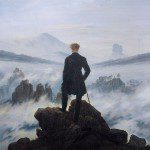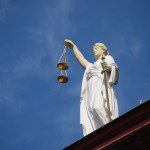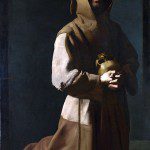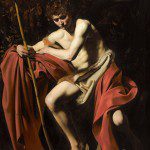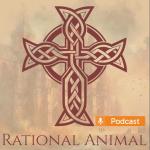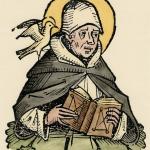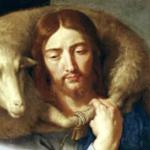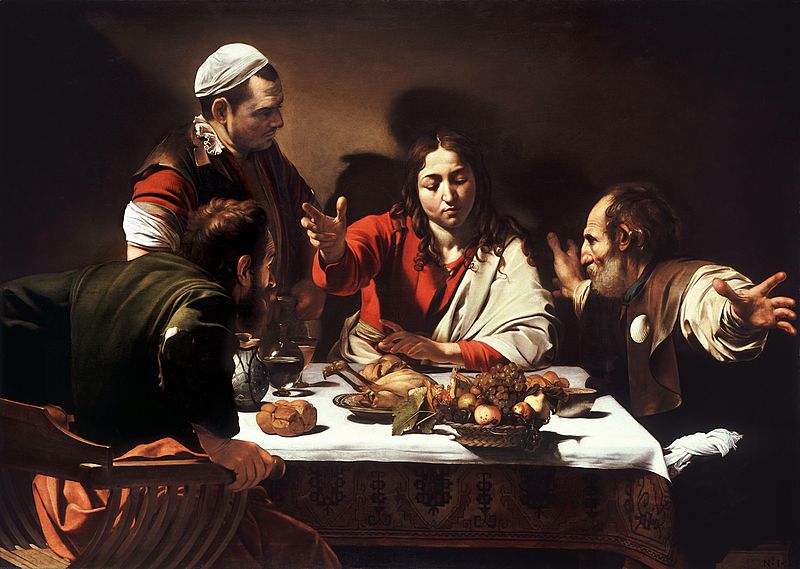
Supper at Emmaus by Michelangelo Merisi da Caravaggio
Years ago, during my highbrow adolescent period reading books like The Scandal Annual or Man Suffocated By Potatoes, I came across an anecdote that has never left me. As the story goes, a Pittsburgh Steeler player was being interviewed after a devastating loss in a pivotal game. Approached by the journalist about his emotions in the wake of the defeat, the player smiled, looked him square in the eyes and said, “Jesus is still Lord.” And that was the end of it. End of interview. End of anecdote.
Now reading this as a Christian youngster, I was impressed that this mammoth man and influential figure would speak up for faith in this fashion. Simultaneously, I was a bit self-conscious wondering if I would likewise have the courage to speak up if I were put to the test. After considering this for a moment, I found myself distracted by the next story in the book which likely involved some crazy mishap with a cowpie or a person buried alive in frozen cranberries.
And yet, years later, I still find myself thinking about that Pittsburgh Steeler.
Why? Because what he said was profound.
In Luke 24:13-35, two disciples of Christ found themselves in the most extraordinary position imaginable.
The Road to Emmaus by Robert Zund
Walking the road from Jerusalem to Emmaus, the disciples found themselves explaining the seismic events surrounding Jesus of Nazareth to a curiously ignorant fellow traveler they had just met by chance. If the teachings and miracles of Christ or his Passion and Crucifixion were not familiar to this stranger, surely the news that he went missing from the grave that very day must have reached him? But not long after they offered their description of events, this man provided a comprehensive explanation of Jesus Christ from the most subtle to the most profound prophecies. Deeply intrigued (yet perplexed at his unexpected wisdom), the disciples begged this stranger to stay with them. And he did. And that night at dinner, as the Gospel of Luke recalls,
And it happened that, while he was with them at table, he took bread, said the blessing, broke it, and gave it to them. With that their eyes were opened and they recognized him, but he vanished from their sight. Then they said to each other, “Were not our hearts burning [within us] while he spoke to us on the way and opened the scriptures to us?”
As Caravaggio’s painting (Supper at Emmaus, shown above) keenly portrays, the moment of recognition that the disciples were sitting in the presence of the risen Lord was consumed in utter astonishment. Utterly apoplectic, these disciples recognized that one fact and one fact alone mattered. Jesus is still Lord.
Gerard Manley Hopkins, S.J. (1844-1889) was a brilliant English poet who found himself called, against his family’s wishes, to become Catholic. In spite of difficulties, in 1866, the year of his conversion, Hopkins produced a poem,
Easter
Break the box and shed the nard;
Stop not now to count the cost;
Hither bring pearl, opal, sard;
Reck not what the poor have lost;
Upon Christ throw all away:
Know ye, this is Easter Day.
Build His church and deck His shrine,
Empty though it be on earth;
Ye have kept your choicest wine—
Let it flow for heavenly mirth;
Pluck the harp and breathe the horn:
Know ye not ’tis Easter morn?
Gather gladness from the skies;
Take a lesson from the ground;
Flowers do ope their heavenward eyes
And a Spring-time joy have found;
Earth throws Winter’s robes away,
Decks herself for Easter Day.
Beauty now for ashes wear,
Perfumes for the garb of woe,
Chaplets for dishevelled hair,
Dances for sad footsteps slow;
Open wide your hearts that they
Let in joy this Easter Day.
Seek God’s house in happy throng;
Crowded let His table be;
Mingle praises, prayer, and song,
Singing to the Trinity.
Henceforth let your souls always
Make each morn an Easter Day.
Within 2 years, Hopkins would begin his novitiate with the Society of Jesus to become a Jesuit priest. While he produced countless works of poetry and prose, Easter crystallized the simple yet infinitely profound Truth: in spite of the Good Fridays of our lives and the life of our Lord, the unchangeable, inconquerable fact is that Jesus is still Lord.
G.K. Chesterton, the British journalist, detective novelist, wit and Christian apologist converted to Catholicism in 1922. While the brilliance of Chesterton is unparalleled and his penetrating, mirthful insights on life and faith inexhaustible, it is probably his poem written on the day of his conversion that most astutely emphasizes the reason for all hope,
The Convert
After one moment when I bowed my headAnd the whole world turned over and came upright,And I came out where the old road shone white.I walked the ways and heard what all men said,Forests of tongues, like autumn leaves unshed,Being not unlovable but strange and light;Old riddles and new creeds, not in despiteBut softly, as men smile about the deadThe sages have a hundred maps to give
That trace their crawling cosmos like a tree,
They rattle reason out through many a sieve
That stores the sand and lets the gold go free:
And all these things are less than dust to me
Because my name is Lazarus and I live.
In a transformative moment anticipated for years by the man who wrote the greatest work of Catholic apologetics, Orthodoxy, fourteen years before he himself became Catholic, Chesterton saw Christ’s illumination obliterating all competing concerns. The road shining white was clear. And along this road the forests of tongues, riddles, creeds, maps and sages which “rattle reason out through many a sieve that stores the sand and lets the gold go free” all fall away. Fall so very far away. After all, they are “less than dust to me”. A man, G.K. Chesterton, was once dead. And now he lives. Why does he live? Because he has been redeemed. And his redemption can come only because Jesus is still Lord.
In our busy lives it is easy to dismiss that which is simple, disdain the black-and-white and arrogantly revel in (or suffer from) the modern gray in which we can obfuscate and dissemble, where we can excuse sin and skirt responsibility. It is also commonplace for us to lose touch with wonder. But whether we are willing to admit it or not, some things are black-and-white, some things are simple, some things are gloriously True, some things are ‘wonder’-ful. The pivotal event in human history resides in the historical existence of Jesus Christ, his teachings, his Passion, Death and Resurrection. In this figure resides the incomparable redemption of humankind.
Perhaps it is time for us to consider this anew. Really consider this anew. Just look at the reactions of the disciples in Caravaggio’s painting. Simply consider the hope which overwhelms the suffering on Hopkins’ Easter morn. See Chesterton’s world turned upright and the road forward shining white. Or consider the Pittsburgh Steeler player’s reflexive yet exuberant answer after a significant loss. They all boil down to one fundamental Truth and one alone which we should never fail to revisit. Again and again. Jesus is still Lord.








